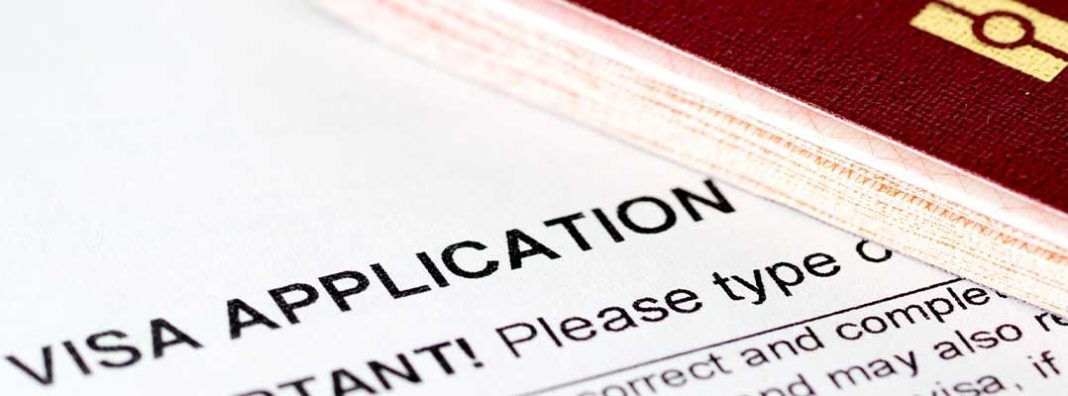
On January 27th, the Supreme Court allowed the implementation across most of the country of stricter standards for immigrants seeking to come to the United States. Known as the public charge rule, the recent change allows the US Citizenship and Immigration Services (USCIS) to deny green cards or permanent residency to any immigrant who has received public benefits or is likely to receive them in the future. With a few states holding back the rule and a new hearing scheduled for March 2nd, the future of the rule is still undetermined.
The public charge rule is meant to prevent the use of public programs by immigrants and so lessen the costs of those programs for taxpayers. But by making immigration more difficult, the public charge rule will likely reduce the US’s economic resilience in the long-run. Immigrants already use fewer public programs than natives. Therefore, a better policy would allow immigrants into the country while preventing the abuse of support programs. Unlike the public charge rule, a policy like this brings the economic benefits of immigration into the US.
What is the public charge rule, and who does it affect?
The public charge rule is meant to reduce the number of people who are eligible for permanent residency in the US by redefining, who qualifies as a public charge. The concept of a “public charge” refers to any migrant that depends on government help.
Historically, the vague definition for public charge meant that few immigrants were denied residency according to this rule because immigrants could avoid the charge by proving they had a financial sponsor. Last year, the Department of Homeland Security (DHS) proposed to change the definition to include anyone who is likely ever to use public benefits. Under this definition, DHS could deny permanent residency to anyone who has ever used public assistance, is likely to use public assistance in the future or does not meet the threshold of sufficient funds to support themselves.
The public charge rule affects any immigrant who has taken part in any of the following programs, even if only for a short time: Supplemental Social Security Income (SSI), Temporary Assistance for Needy Families (TANF), state and local cash programs, Medicaid, Special Nutrition Assistance Programs (SNAP), Special Supplemental Nutrition Program for Women, Infants, and Children, housing and energy assistance, and refundable Earned Income Tax Credits (EITC).
DHS’s proposed changes apply to applicants who have received any of these public benefits in the last three years. The rule does not apply to immigrants who have already received permanent residency, asylum seekers, or refugees. The rule also applies to tourist visas, student visas, and temporary worker visas.
For applicants who are not yet in the US but are applying or plan to apply for permanent residency, the rule proposes a further test to determine whether the applicant is likely to receive public assistance in the future. The test weighs different factors, including age, health, family status, assets, resources, education, and English proficiency.
Consider the hypothetical case of Lucero, a woman from El Salvador seeking entry to the US. Lucero is fleeing gang violence that has spread throughout her town and threatens both her life and livelihood. Lucero’s daughter is a US citizen living in New Mexico and can offer sponsorship to her mother. However, because of the public charge rule, the immigration officer processing the sponsorship could deem Lucero as someone who may use public benefits at any point of her stay in the US, such as housing assistance. Lucero could be denied entry not because she will use a public program, but because she might, at some point in her stay in the US, participate in a public program. In that case, not only will she not be able to join her daughter, but she will have to return to her town and put her life in danger.
What does the rule mean for immigrants?
The public charge rule change has two key implications for immigrants. First, it will severely cut the number of immigrants entering the US. According to a study by the Migration Policy Institute, the public charge rule could increase the number of residency denials from 3 percent to 47 percent. In fact, even before the rule was implemented, the number of visas denied under the public charge provision has skyrocketed under the current administration. In 2016, 164 visas were denied on the basis of the applicant qualifying as a public charge. That number increased to 5,518 in 2018. Under the new rule, we can only expect this number to increase.
Source: Migration Policy Institute
Second, the rule’s strict standards disadvantage those immigrants who would benefit the most from migrating and allow only the better-off to enter the country. Usually, immigrants applying for visas to the US have to show that they are self-sufficient or have enough financial resources in order to not rely on American public assistance programs. The standards imposed by the rule, however, are extremely high. The rule proposes that immigrants should have financial assets that are more than 250 percent of the federal poverty line, which is $21,137 for a family of two. Yet, most immigrants do not meet this standard.
Out of the four million legal immigrants who arrived in the past five years, more than half do not meet the new income standard. For context, 40 percent of Americans do not meet the standard.
The story of the poor migrant to America, however, is one of the individuals seeking better opportunities for themselves and their families. Immigrants reflect a fundamentally American ideal of hard work laying the groundwork for success. Emma Lazarus’s poem inscribed on the Statue of Liberty describes the US as “the golden door” because of the economic opportunity that it represents to the hopeful immigrants who saw Lady Liberty as they approached Ellis Island.
The idea that immigrants need to already be economically successful before coming to the US represents a slamming of that golden door of opportunity. The first to suffer from this will be the immigrants denied entry, as most applicants from these areas will be denied visas though the effects won’t stop there. The income standards are unlikely to be effective for serving the interests of US businesses. For example, many manual labor industries desperately need workers from Latin America and Africa. Immigrants carry the most costs of the public charge rule, but US businesses will also suffer.
Source: Migration Policy Institute
What does the rule mean for Americans?
The public charge rule assumes that immigrants will use and take advantage of public assistance programs and is denying entry to people because of the risk that they might use them. While it is understandable that taxpayers do not want free-riders, there are already multiple safeguards against the abuse of public programs. First, most immigrants do not have access to welfare programs. By law, temporary immigrants cannot use public benefits anyway. Immigrants who become permanent residents can use public benefits, but only after five years of living in the US. By this time, they are already taxpayers and are contributing to funding these programs. Second, immigrants tend to contribute more in taxes than they consume in benefits. Studies have also shown that immigrants tend to use less welfare than Americans. A January 2020 study by the Cato Institute is not unique in finding that immigrants cost less per capita than welfare payments to natives.
The public charge rule is a short-sighted policy. Its goal of limiting the use of welfare programs by immigrants is a sensible one, but there are better means to meet that goal. The public charge rule is overly broad. By restricting immigrants who may not even draw on public assistance, the public charge rule jeopardizes the economic benefits that immigrants bring to the US. That means that the public charge rule may ultimately hurt Americans. As many studies have shown, immigrants increase prosperity, boost economic growth, and bring entrepreneurship and innovation. To give two concrete examples, without immigrants, Google and AT&T may have started outside of the US or may never have come into existence in the first place.
Efforts to restrict immigration, like the public charge rule, will only make the US a poorer and less innovative country. There is robust evidence that the benefits of immigration — even among immigrants who may start from the bottom — outweigh the costs. There are good reasons to think about limiting welfare program use, and good policy will promote immigrants standing on their own two feet without cutting effective programs that give individuals a hand up.

